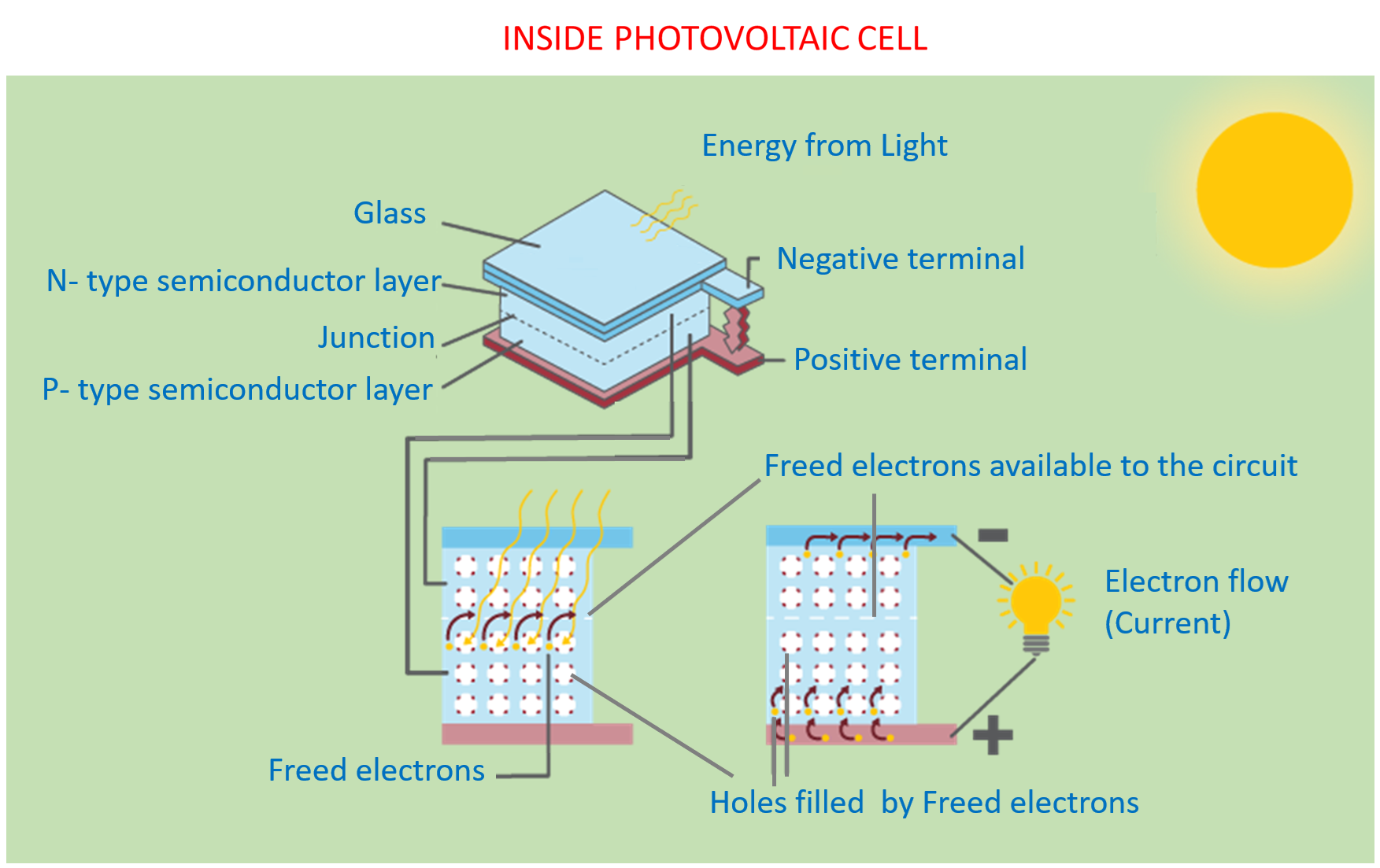Photovoltaic cells
What is a photovoltaic cell
A photovoltaic cell is an electronic device that harnesses solar radiation, converting light energy (photons) into electrical energy (electrons) through the photoelectric effect.
How photovoltaic cells work
Photovoltaic cells consist of two oppositely charged semiconductors separated by a neutral junction. The negative layer (N-semiconductor) is engineered by altering the silicon crystal structure to create an excess of electrons, while the positive layer (P-semiconductor) has a deficiency of electrons, behaving as a positively charged component within the crystal lattice. This results in charge neutralization at the P/N junction. When sunlight strikes the N-semiconductor, electrons are released, increasing the potential difference between the N and P regions. Within a closed circuit, this difference generates an electric current, a portion of which becomes usable electricity for consumers.
Types of photovoltaic cells
Most modern photovoltaic cells are primarily made from silicon, a widely available and cost-effective semiconductor. The silicon undergoes a purification and crystallization process before being sliced into thin layers to create the cell. Based on the manufacturing method, these silicon cells are categorized into different types:
- Monocrystalline silicon cells : These cells consist of a single silicon crystal with a uniform structure, ensuring higher efficiency compared to other silicon-based cells (18–25%). The precise atomic alignment enhances conductivity, contributing to superior performance. However, their production process is more time-consuming and costly than alternative types.
- Polycrystalline silicon cells : These cells consist of multiple silicon crystals, making their production more cost-effective compared to monocrystalline silicon. However, this comes at the expense of lower efficiency, typically ranging between 16–20%.
- Amorphous silicon cells : Thin-film silicon, with its irregular atomic structure, is deposited on flexible substrates like glass, metal, and plastic, allowing adaptable panel designs for seamless architectural integration. While its efficiency is lower (6–8%) compared to crystalline silicon, it remains a more cost-effective option. Recent innovations have further advanced photovoltaic technology. Multi-junction cells, composed of various semiconductor layers, efficiently convert different wavelengths of light, achieving 45–50% efficiency in labs under concentrated sunlight. Similarly, tandem solar cells enhance performance through stacked monolithic layers, with perovskite emerging as a promising material for future advancements
Applications of photovoltaic cells
These days most photovoltaic cells are used to produce energy for the following purposes:
- Homes : Photovoltaic self-consumption systems frequently power home lighting, electrical appliances like washers, dishwashers, and refrigerators, as well as televisions and computers. They also support water heating, radiators, underfloor heating, and swimming pool heating, offering versatile energy solutions.
- Street Lights : In solar streetlights, a battery charged by a solar panel during the day powers the LED lamp at night. Other urban systems operate similarly, including parking meters, traffic lights, EV charging stations, and bus stops etc.
- Space ships & Satellites : Far from Earth's power grid, satellites and spacecraft rely entirely on solar energy. The International Space Station (ISS), for example, sustains astronaut life and research through its vast solar panel arrays.
- Remote Areas : Paired with storage batteries, this solution efficiently delivers electricity to remote locations where grid access is unavailable or cost-prohibitive, such as lighthouses, highway SOS posts, and railway signalling system etc.


